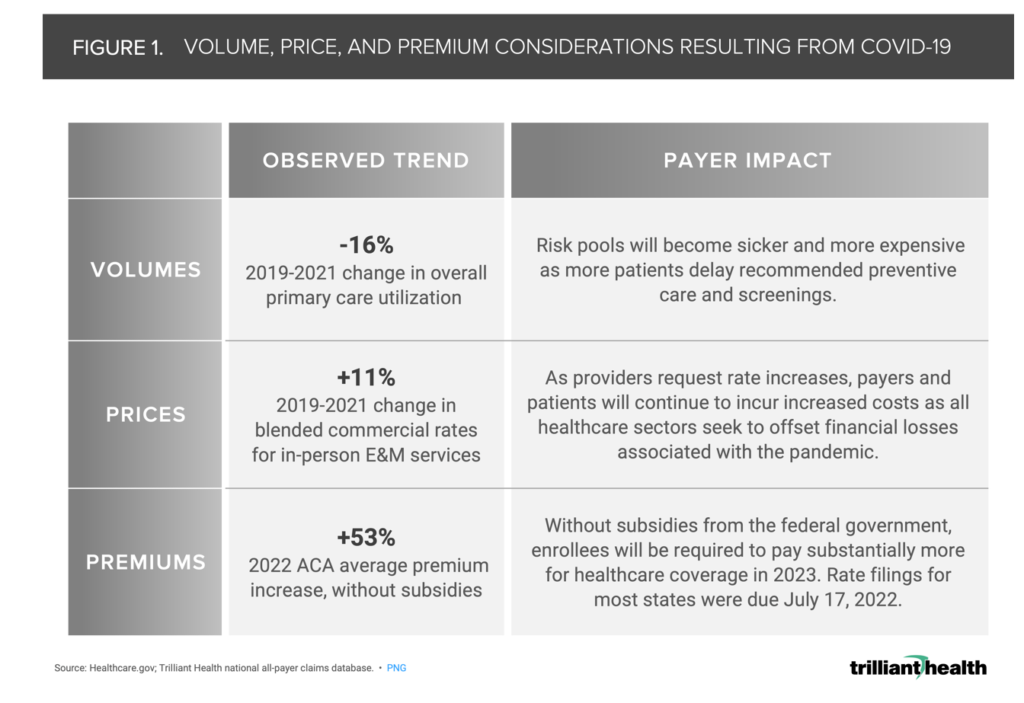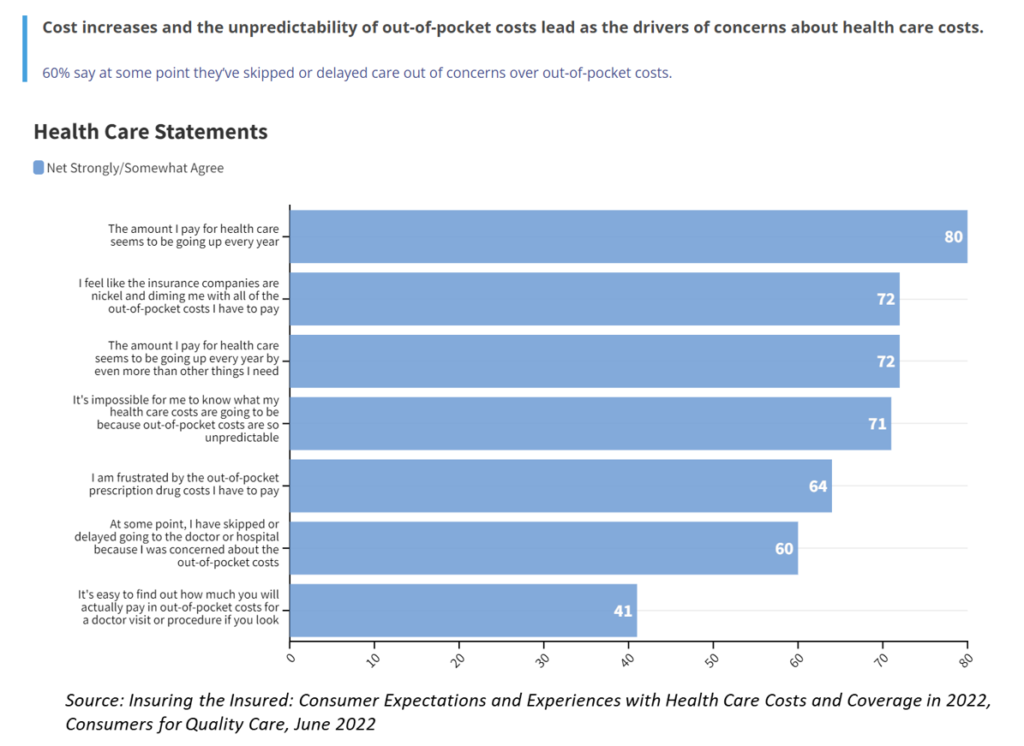Nearly 100 million people in the U.S. cut back on healthcare due to costs in the first half of 2022, according to the latest poll on health care costs form Gallup and West Health, gauging Americans’ financial health in June 2022.
That’s the month when inflation in the U.S. reached 9.1%, a 40-year high.

Among Americans’ cuts to household spending was the most common medical self-rationing behavior, delaying or avoiding care or purchasing prescription drugs, the survey found. Nearly 4 in 5 people in the U.S. had delayed care or prescription meds between January and June 2022.
In addition, one in four people in the U.S. drove less in the first half of the year due to rising healthcare prices, and 17% of people cut back on utilities.

Americans cutting back on medical care or not filling prescriptions due to rising healthcare prices were more likely to earn under $50,000 a year, shown in the second chart. 41% of people earning under $24,000 a year and 36% of those making between $24K to $48,000 delayed or avoided care.
Among higher income people in the U.S. earning between $120K and $180,000, 18% of health consumers avoided care due to rising healthcare prices, the chart details.
Concerns about the ability to pay for needed healthcare in the next six months cross political party IDs, Gallup-West Health discovered.

The third table organize the medical cost affordability concerns by demographics of political ID, gender, and race/ethnicity.
Note that on a net “concerned” basis ( extremely concerned plus concerned), by party ID that covers,
- 33% of Democrats
- 42% of Independents, and
- 44% of Republicans.
More women than men are concerned about health care costs, 42% versus 36%. By race/ethnicity, marginally more Black and Hispanic adults are health care cost-concerned than Whites: 44% of Black adults, 42% of Hispanic adults, and 38% of White adults.

Health Populi’s Hot Points: As consumers have been slow to return to primary care and recommended preventive screenings, “Forgone preventive care, especially for patients with predispositions for certain cancers or chronic illnesses, inevitably prevents early intervention and diagnosis, often resulting in accelerated disease progression. The resulting pool of sicker patients enrolled in a given health plan, particularly in the commercial market, will be more expensive to manage,” Sanjula Jain, PhD, explains in Delayed Care Leads to Increased Costs for Patients and Payers Alike.
The table labeled Figure 1 describes several trends in health care utilization (volumes), prices and premiums for payers which connect the dots between avoided care and cost impacts.

It’s the out-of-pocket costs driving most health consumers’ concerns about health care financing (and as a result, avoiding care among millions of patients), called out in a June 2022 survey on Insuring the Insured: Consumer Expectations and Experiences with Health Care Costs and Coverage in 2022 from Consumers for Quality Care.
The bar chart shows majorities of U.S. adults agreeing with statements like, “the amount I pay for health care seems to be going up every year,” “I feel like the insurance companies are nickel and diming me,” and, “I am frustrated by the out-of-pocket prescription drug costs I have to pay.”
Fast forward to yesterday’s sliver-thin vote to pass the Inflation Reduction Act. In the painful political process known as “Vote-A-Rama,” the Senate voted 57-43 to retain the cap, but needed 60 votes to do so under parliamentary rules.
“Republicans have just gone on the record in favor of expensive insulin,” Sen. Ron Wyden (D-Ore.) said in response.
Watch this particular space (especially in 2022 midterm campaign messaging among Democrats). And especially pay attention to the intersection of people with diabetes, specifically women with diabetes (and Moms of kids or sisters with diabetes) who in larger numbers cite financial stress due to health care costs.





 Interviewed live on BNN Bloomberg (Canada) on the market for GLP-1 drugs for weight loss and their impact on both the health care system and consumer goods and services -- notably, food, nutrition, retail health, gyms, and other sectors.
Interviewed live on BNN Bloomberg (Canada) on the market for GLP-1 drugs for weight loss and their impact on both the health care system and consumer goods and services -- notably, food, nutrition, retail health, gyms, and other sectors. Thank you, Feedspot, for
Thank you, Feedspot, for  As you may know, I have been splitting work- and living-time between the U.S. and the E.U., most recently living in and working from Brussels. In the month of September 2024, I'll be splitting time between London and other parts of the U.K., and Italy where I'll be working with clients on consumer health, self-care and home care focused on food-as-medicine, digital health, business and scenario planning for the future...
As you may know, I have been splitting work- and living-time between the U.S. and the E.U., most recently living in and working from Brussels. In the month of September 2024, I'll be splitting time between London and other parts of the U.K., and Italy where I'll be working with clients on consumer health, self-care and home care focused on food-as-medicine, digital health, business and scenario planning for the future...